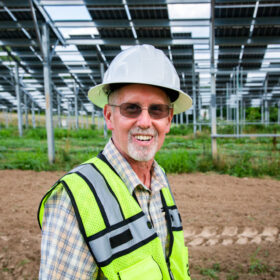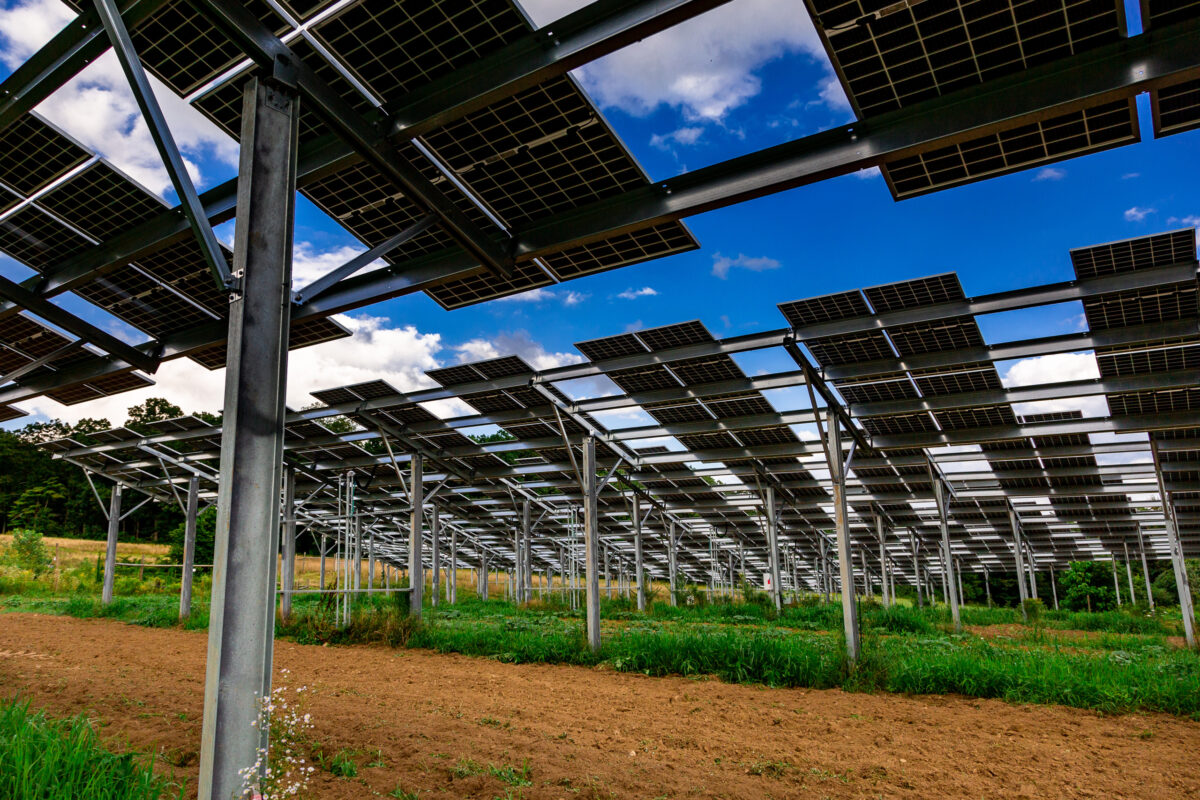The Great Plains Institute (GPI), a farming research non-profit group, found that of the 2,870 counties in the lower 48 U.S. states, only about one-third had recorded principal-use solar installations of 1 MW in late 2021. Of the counties with solar installations, a large majority (93.5%) had less than 0.5% of their total land used for solar development. Taylor County, Georgia, according to GPI, had the greatest portion of any county’s total acreage in solar development at 4% of the total county area.
Aggreko Energy Transition Solutions (ETS), a business unit of Scottish modular power equipment distributor Aggreko Ltd., announced it would become the capital partner to the Farmers Powering Communities (FPC) platform, a farmland community solar development collective. With preservation and non-profit groups Edelen Renewables, the American Farmland Trust and community solar aggregator Arcadia, the FPC platform is focused on building out 500 MW of community solar projects over the next decade sited on rural farmland.
Formed in September 2022, Aggreko ETS is focused on developing, owning, and operating clean energy infrastructure projects in North America through long-term investment and partnerships from within its parent company’s dealer network.
Farmers and rural stakeholders seeking more information or to enroll in the community solar agriculture program can click here.
“Expanding access to community solar, which offers a cost-efficient way for people to use solar energy, aligns with our mission to accelerate the energy transition through clean energy infrastructure that delivers reliable, economic energy,” said said Prashanth Prakash, chief commercial officer, Aggreko ETS. “Working together, we are confident of our success in bringing the economic and environmental benefits of community solar to small-town America.”
The 500 MW community solar portfolio represents a $1 billion investment opportunity to bring co-located clean energy generation to America’s crops and food growers, said Adam Edelen, chief executive officer, Edelen Renewables.
The farming community solar program will advance projects of 25 to 50 acres to provide green energy to the many residents who don’t have access to rooftop solar or a local clean energy source. These could be low- to middle-income residents who may not be able to afford solar, people who rent and don’t own their roof, or people whose homes are not situated to take advantage of the sun’s energy.

“Farmers are on the frontlines of climate change, experiencing extreme weather events that impact their crops, livestock and livelihoods,” said John Piotti, president and chief executive officer, American Farmland Trust. “We also know that farms can be part of the solution to the climate crisis. Farmland can draw carbon from the air to rebuild soil when farmed using climate-smart practices like cover crops and reduced tillage. We need to dramatically ramp up solar energy production while retaining our farms and ranches.”
The platform will adhere to AFT’s Smart Solar framework, which encompasses accelerating solar energy development, strengthening farm viability, and safeguarding land suited for farming and ranching.
The Smart Solar framework guides solar development where it has the least negative impact on land suited for farming, ensures that agricultural land where projects are sited can be farmed in the future, and promotes agrivoltaics, creating opportunities for both farming and solar energy on the same land.
A common misperception among rural communities is that solar development replaces farmland and deters from the production value of hundreds of acres of farmland. According to GPI’s studies, it’s worth noting that solar development has not conflicted with cultivated agriculture land use at a large enough scale to risk county-level economic agricultural bases. Even if high levels of solar are deployed in farming regions, the land use required is orders of magnitude smaller than land currently in cultivated agriculture.
The results of GPI showed that for no region does the average percentage of both existing and queued solar in a county surpass a 0.5% ratio of solar developed of the county’s total land.
Grafton Solar
The American Farmland Trust highlights the Grafton Solar project, the first agrivoltaics and shared land use solar project in Massachusetts, which began producing squash and reintroduced cattle onto its land in July 2022. Developed in cooperation between AES and Bluewave Energy, Grafton Solar is a 2 MW ground-mounted solar with 1.4 MW energy storage project situated on the Knowlton Farms, located just nine miles east of Worcester, Mass.
BlueWave developed ground-mounted panels on 19 of the farm’s 300 acres for dual-use solar. The panels are elevated to 10.5 feet with spaced rows, allowing farm machinery, livestock, crop and soil sciences to easily function within the array underneath. The project is owned by AES and serves as the research site trial for the U.S. Department of Energy Solar Energy Technology Office (SETO). The project also provides power to local community solar subscribers.
Grafton Solar started to generate revenue for the New England state’s SMART clean energy program in October 2022, and is expected to reach its full potential for agricultural production in 2025.
This content is protected by copyright and may not be reused. If you want to cooperate with us and would like to reuse some of our content, please contact: editors@pv-magazine.com.









How are you planning on disposing of the spent panels as they are 300 percent more deadly than nuclear waste to disposes of .. check out that fact..